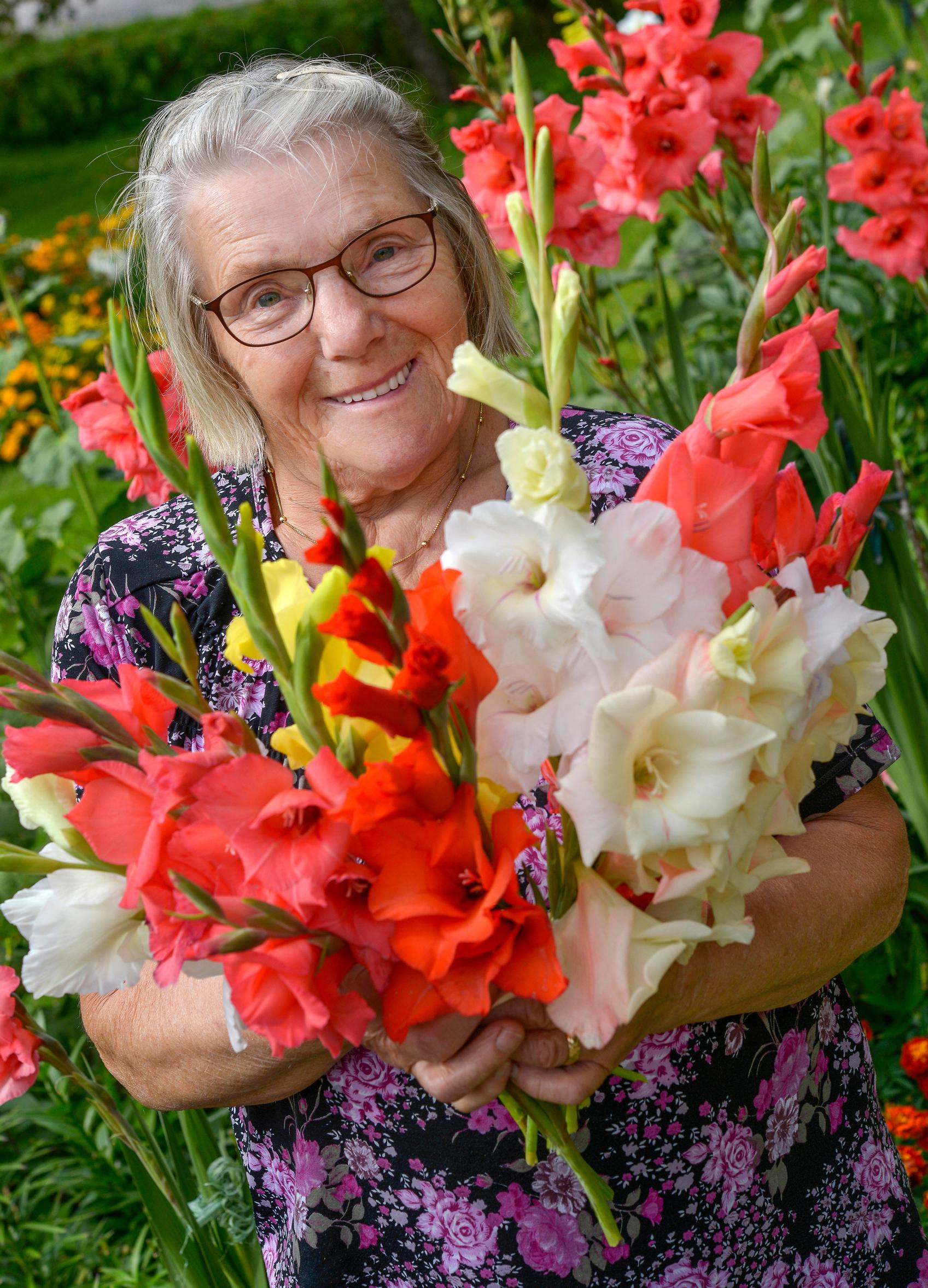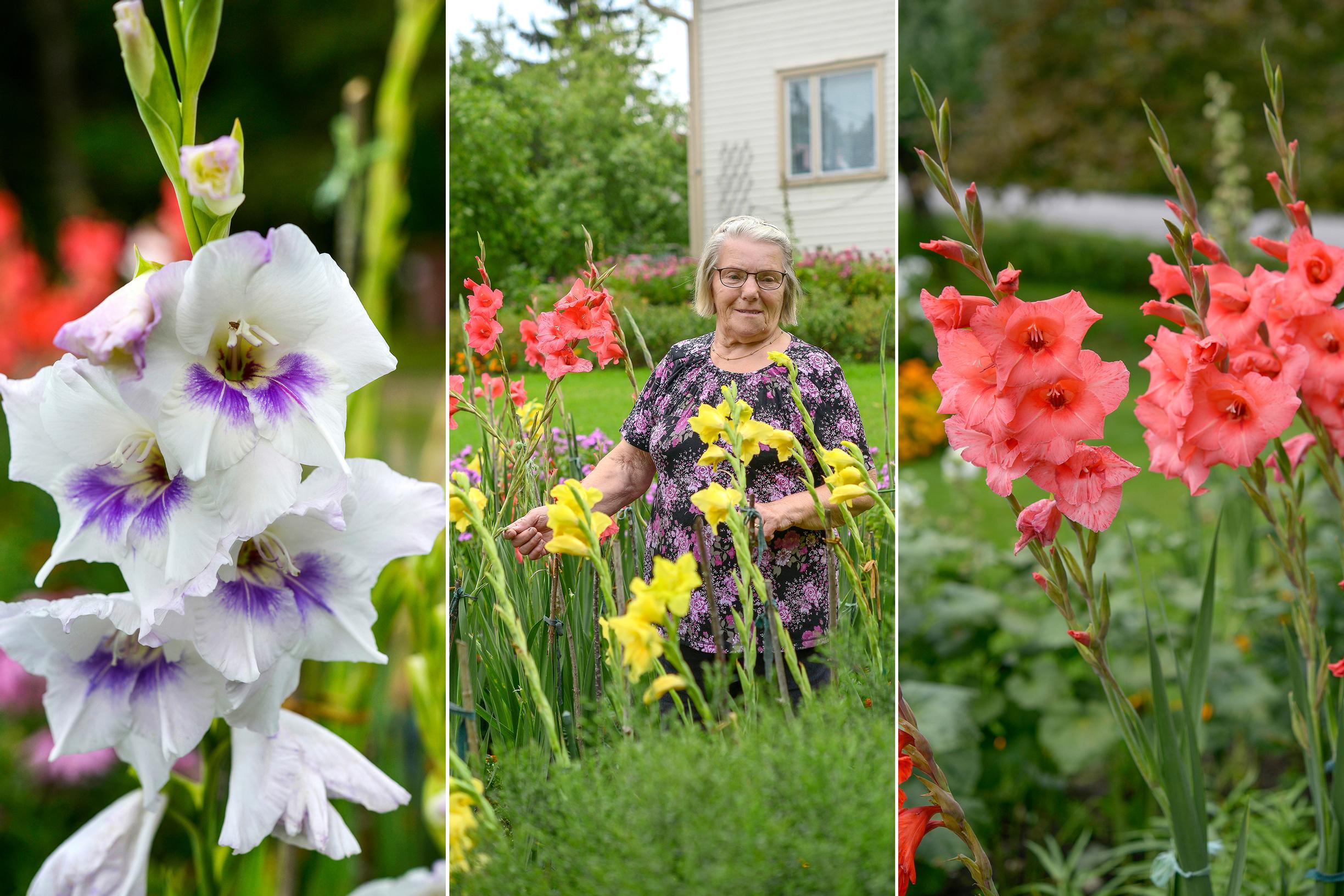
Easier than dahlias, says Marjatta, who has grown gladioli for over 20 years—get an expert’s tips for growing sword lilies!
Marjatta Rekola is captivated by the gorgeous colors and details of gladioli, also known as sword lilies. This corm plant’s splendid blooms begin in July and continue well into fall. The flowers appear in such abundance that Marjatta gathers them into bouquets for vases and often brings them as gifts.
What got you hooked on gladioli?
I saw a bag of corms at the store and got excited to try growing them. I got them to bloom right away, and now the oldest have been thriving in my yard for over 20 years.
Gladioli come in beautiful colors and intricate details: there are multiple shades of orange, and the red variety has ruffled edges. The flowers and all their colors are simply stunning. Gladiolus is also an easy, reliable plant. I’ve never had any corms spoil in the ground, nor have I ever seen pests on them.
I occasionally buy new varieties, but older plants keep multiplying year after year. Each season, a gladiolus forms a new corm to replace the old one—sometimes even two. At the moment, I have about 300 gladioli, though I’ve had around a hundred more at times.
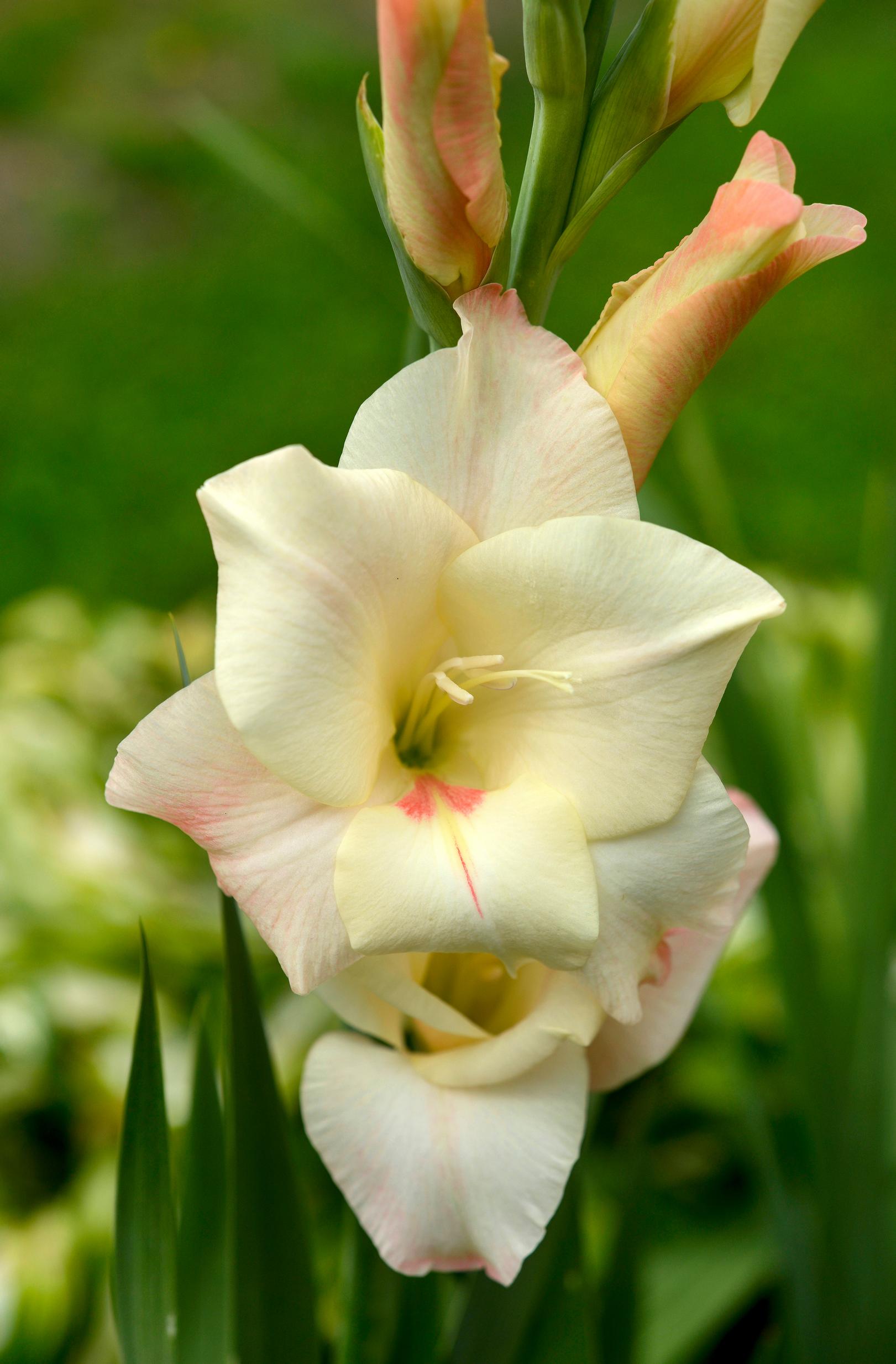
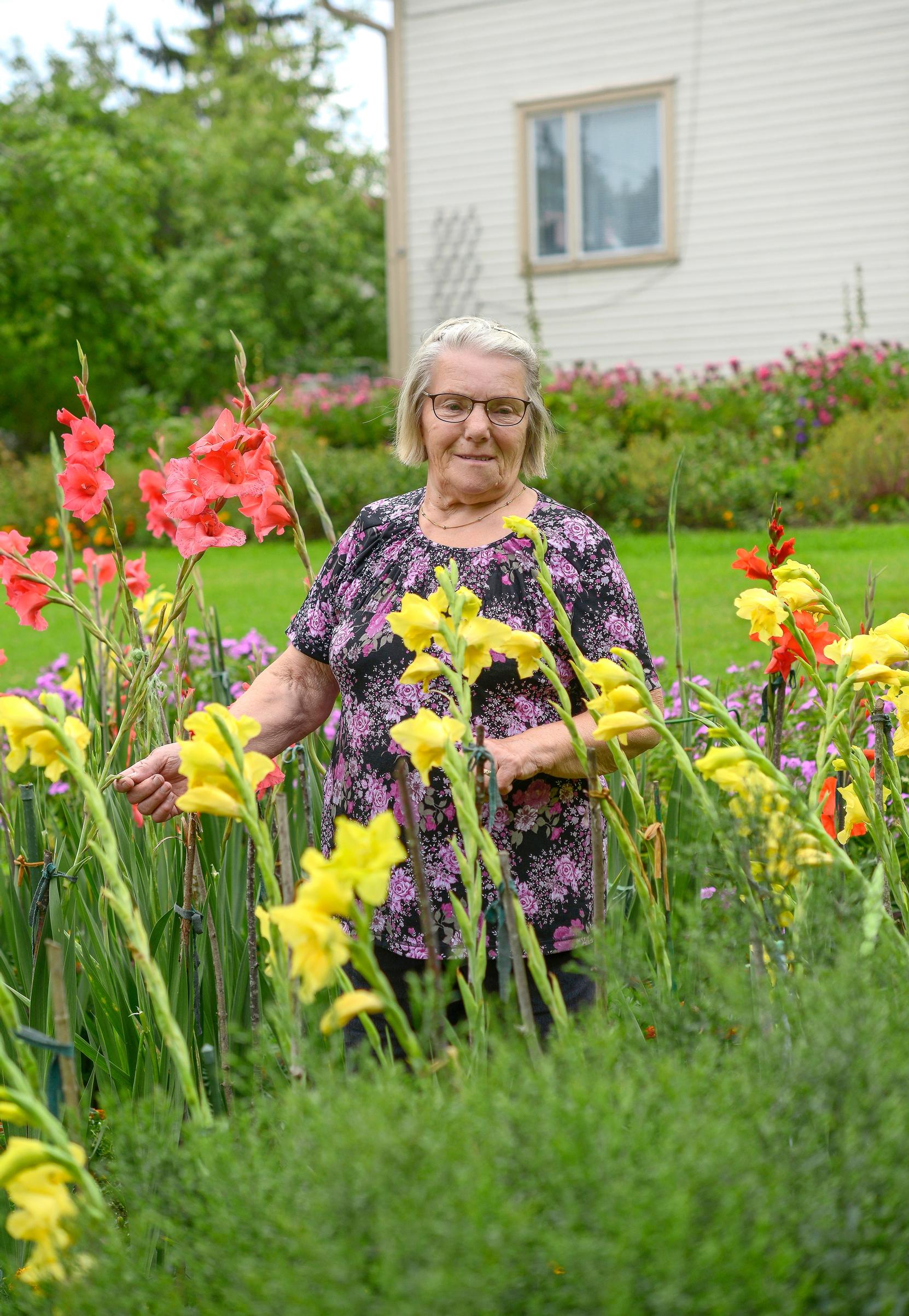
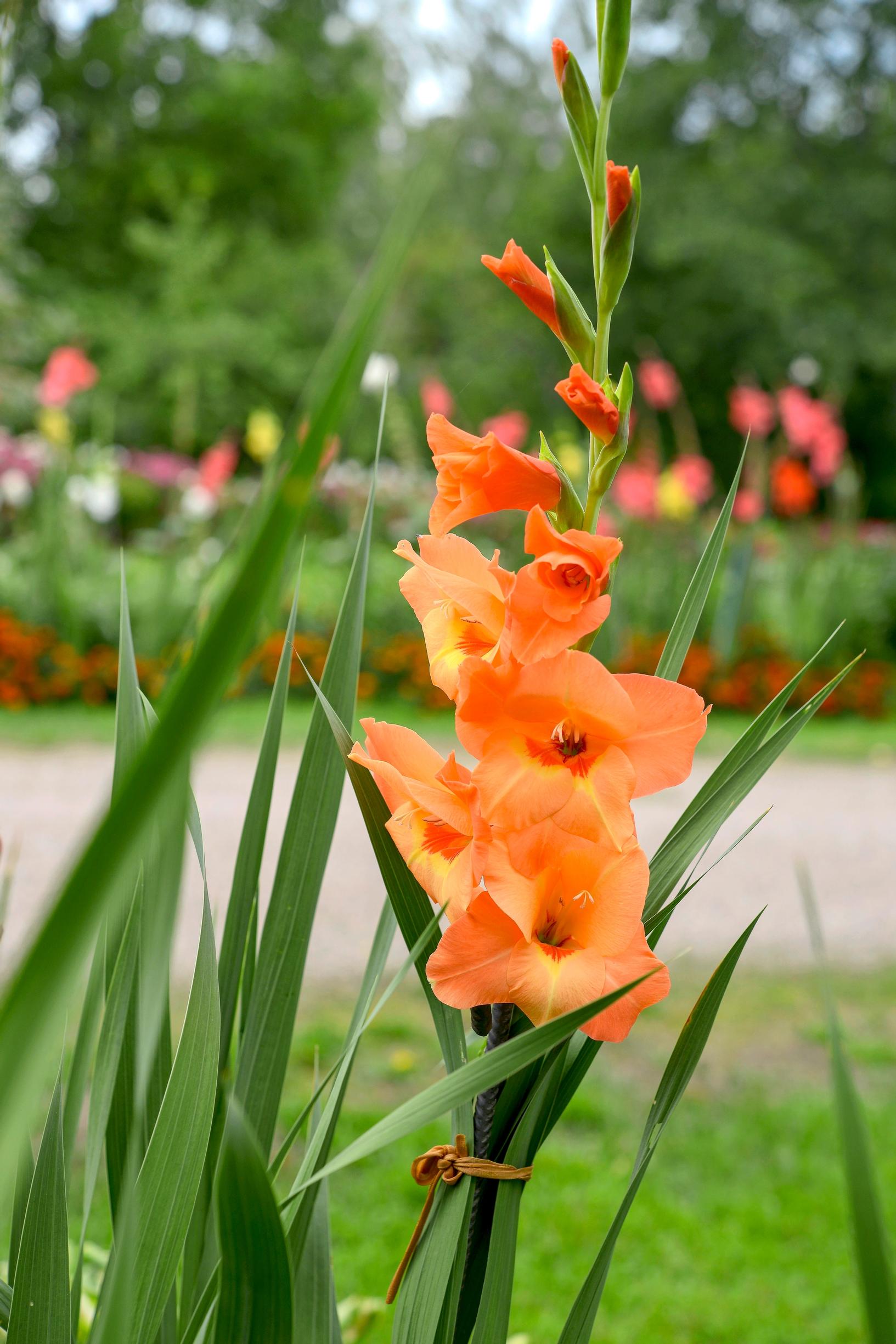
What are your top growing tips?
I usually plant the corms directly in the ground in early May, but it depends on the year and how warm the soil is. By planting time, the ground should be somewhat dry and crumbly, and it shouldn't clump when you turn it over.
I don’t rotate or change the growing spots for my gladioli, but I do improve the beds with fresh soil. Our soil here is heavy clay, which doesn't do gladioli any favors. I place chicken manure at the bottom of the planting hole, add a few centimeters of soil on top, plant the corm, and then cover it with about five centimeters of soil.
In summer, I give the plants liquid fertilizer a couple of times. The chicken manure and extra fertilization help the corm grow larger than five centimeters, which yields impressive blooms. One corm typically produces two flower stalks, sometimes three. I already get a gorgeous bouquet in July, but August, September, and even October are the prime blooming months.
I plant corms in their own beds and also among perennials and marigolds.
What kind of care do gladioli need?
Gladioli have small foliage, and I’ve never seen them droop or get limp if they’re short on water. I do give the beds some water during long dry spells so they grow lush. The French marigolds in the same bed get cold well water from the hose. Marigolds also help by covering the soil surface and keeping weeds down.
Staking the plants is absolutely crucial, as their stems are flexible and can break easily. The flower spike collects a lot of water when it rains, which can topple it in the wind. That’s why you have to straighten the flower stalks and tie them to stakes with string, even higher up.
If a flower stalk breaks, I pop it in a vase, and I do the same with tall flower spike tips. In a vase, a gladiolus will open and then wilt one flower each day. I pinch off spent flowers both indoors and out. It’s a pleasant chore that lets me enjoy the colors and beauty of the blooms.
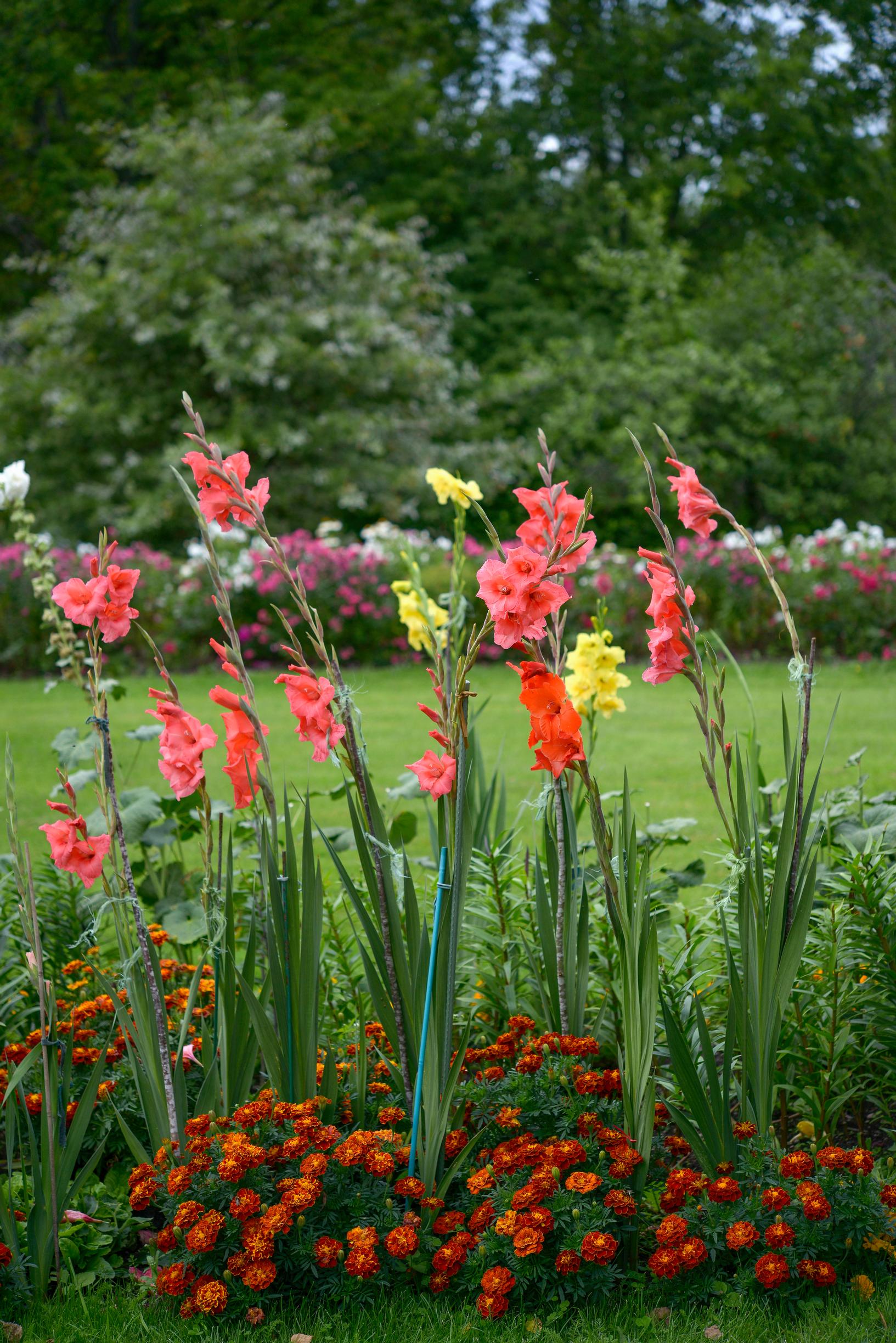
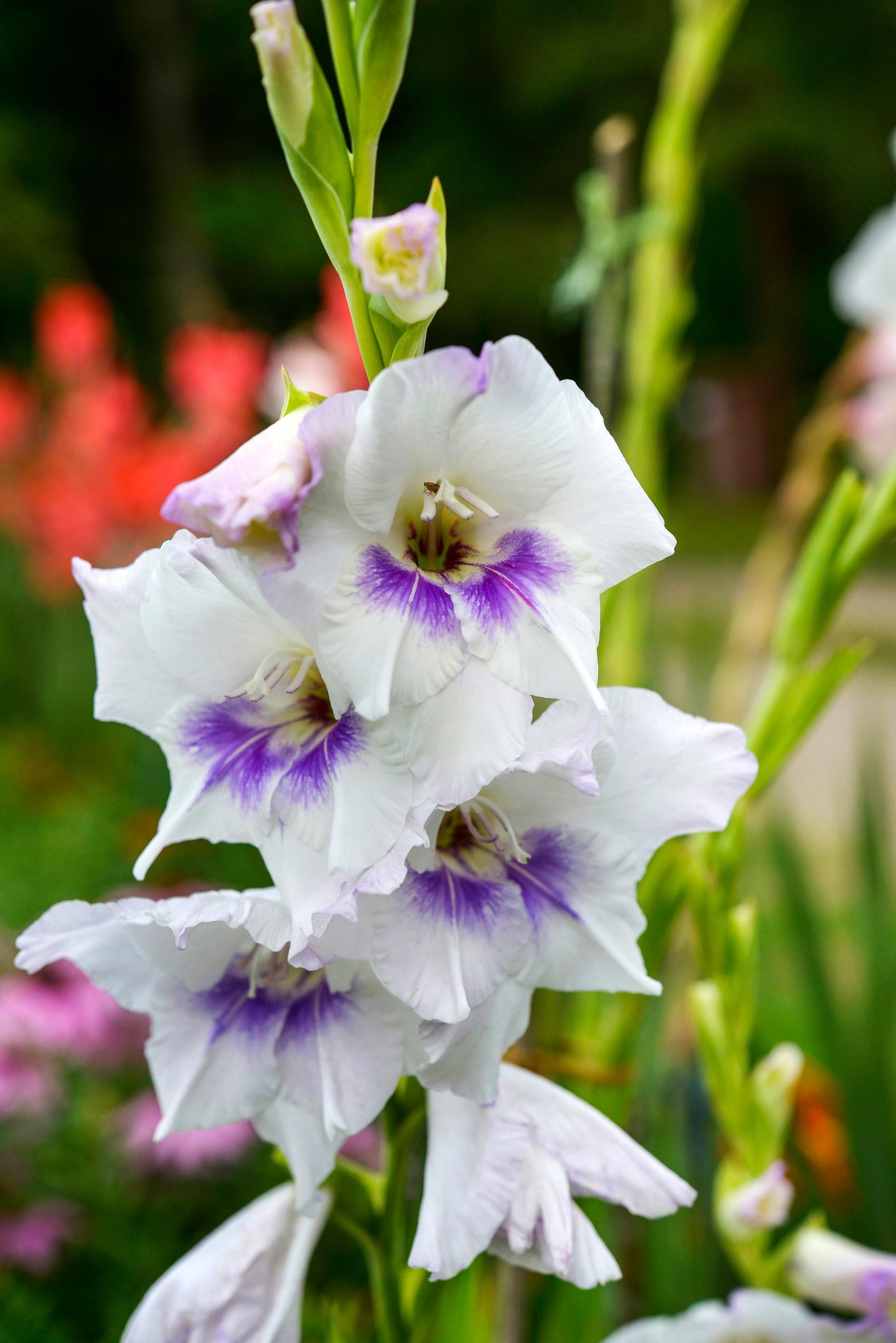

How do you overwinter the corms?
I leave my gladioli in the bed until frost, then lift them out with their stems and let them dry in the garage. Once the stems are brown and dry, I snap them off and move the corms to the cellar under the house. The temperature there stays below 10 °C (50 °F), and the air is suitably humid. A gladiolus corm is firm and stores better than a dahlia tuber. I don’t recall ever losing a corm to rot or dehydration in the cellar. Plus, handling smaller corms is simple and light.
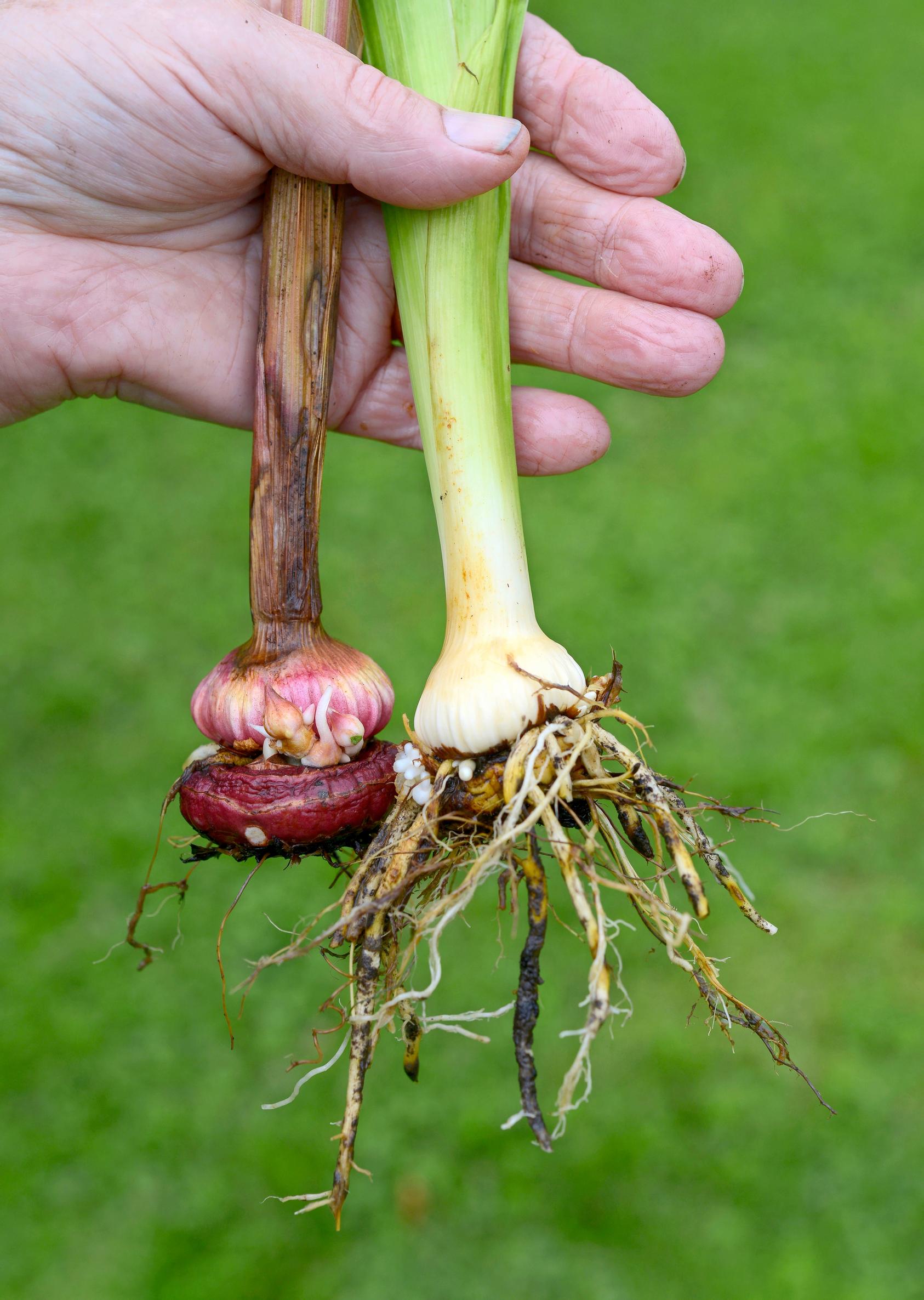
Are there differences between the varieties?
I mostly grow garden gladioli, and I have just a few of the smaller, more delicate dwarf ones. I haven’t kept track of their names.
Both new and old gladioli bloom just as magnificently each year. But there’s a difference in timing: while the orange and pink varieties are almost done by early August, the white ones are still in bud. By mid-August, the peach variety is in full glory. Some years, the last flowers don’t open until after I’ve lifted the plants and taken them into the garage. So it takes the entire summer to see all the colors.
From late July through late fall, there are so many blooms that I happily cut them for a vase and bring them as gifts.
